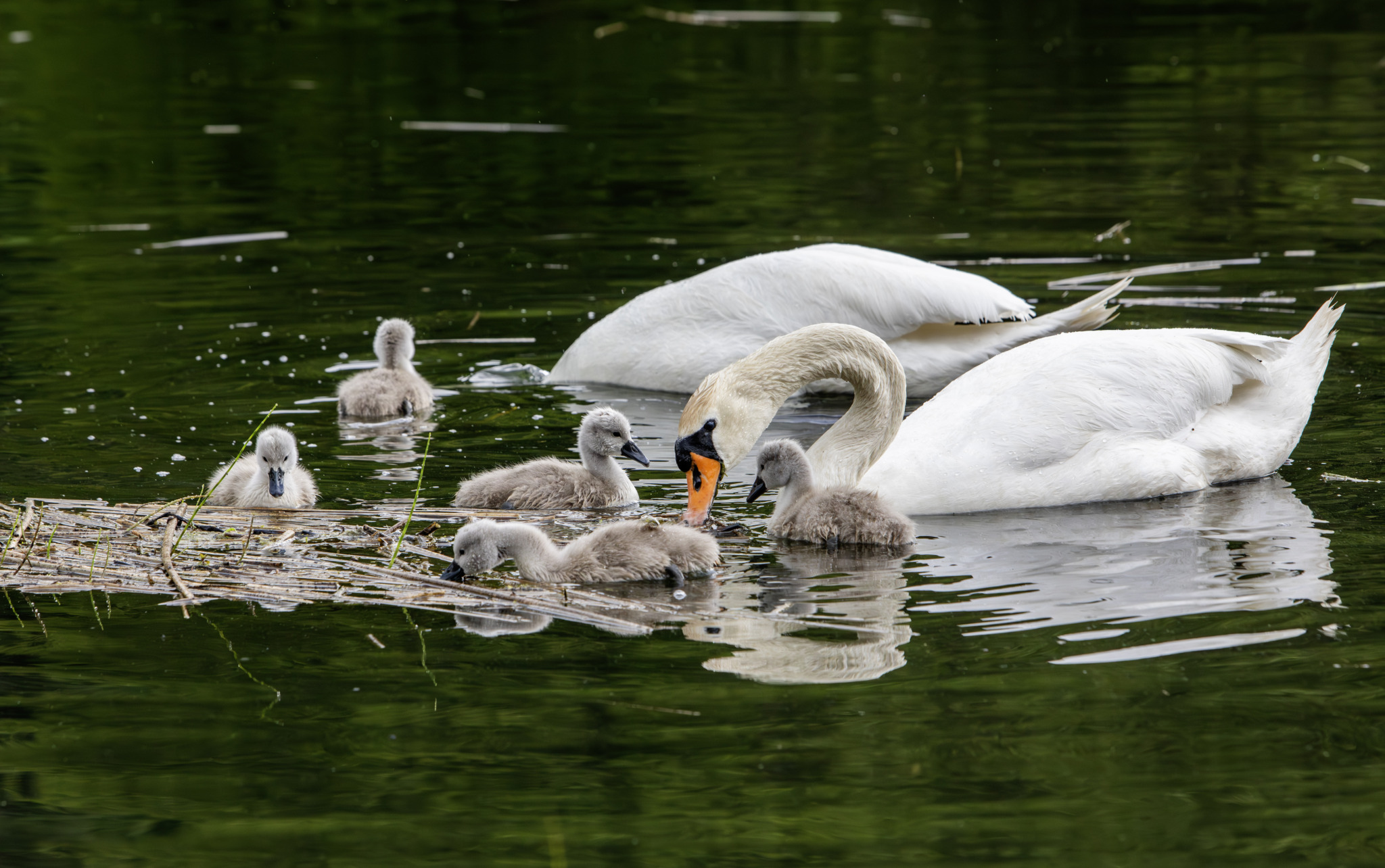Swans are large waterfowl known for their grace, beauty, and elegance. They belong to the genus Cygnus in the family Anatidae, which also includes ducks and geese. Here are some key features and characteristics of swans:
Appearance
- Size: Swans are among the largest flying birds. They can have a body length of up to 1.5 meters (5 feet) and a wingspan of up to 3 meters (10 feet).
- Color: Most swan species are predominantly white, though some, like the Black Swan (Cygnus atratus), are mostly black. The plumage of juveniles is usually grayish-brown, known as “cygnets.”
- Neck: Swans have long, curved necks which they often hold in an elegant S-shape.
- Bill: Their bills are broad and flat. The color varies by species; for example, Mute Swans (Cygnus olor) have orange bills with a black knob, while Trumpeter Swans (Cygnus buccinator) have all-black bills.
Habitat
- Swans inhabit a variety of aquatic environments, including lakes, rivers, ponds, marshes, and coastal waters. They prefer calm, shallow waters where they can forage and nest.
Distribution
- Swans are found across the Northern Hemisphere, including North America, Europe, and Asia. Some species, like the Black Swan, are native to the Southern Hemisphere, particularly Australia.
Behavior
- Feeding: Swans are primarily herbivorous, feeding on aquatic vegetation, algae, and roots. They use their long necks to reach underwater plants. Occasionally, they may also consume small aquatic animals and insects.
- Flight: Despite their size, swans are strong fliers. They require a running takeoff across water to gain enough speed for flight.
- Social Structure: Swans are social birds, often found in pairs or small flocks. During the breeding season, they form monogamous pairs and are highly territorial.
Breeding
- Nesting: Swans build large nests made of reeds, grasses, and other vegetation, usually on the ground near water. They often use the same nesting site year after year.
- Eggs: The female swan (pen) typically lays between 3 to 8 eggs, which she incubates for about 35 to 41 days.
- Chick Rearing: Both parents are involved in raising the cygnets, which are precocial and can swim shortly after hatching. The family stays together for several months, often until the next breeding season.
Vocalizations
- Swans produce a variety of vocalizations, though they are generally quieter than other waterfowl. Mute Swans, despite their name, can make hissing, snorting, and grunting sounds. Trumpeter Swans are named for their loud, trumpet-like calls.
Conservation Status
- The conservation status of swan species varies. While some populations are stable or increasing, others are threatened by habitat loss, pollution, and hunting. Conservation efforts focus on habitat protection and restoration, along with legal protection from hunting and disturbance.
Interesting Facts
- Swans are known for their strong pair bonds, often mating for life. If one mate dies, the surviving swan may go through a period of mourning and may take a long time to find a new mate.
- In many cultures, swans are symbols of beauty, grace, and love. They feature prominently in mythology, literature, and art.
- Swans have been known to exhibit aggressive behavior when defending their nests or territory, particularly during the breeding season.
Common Species
- Mute Swan (Cygnus olor): Known for its distinctive orange bill and graceful appearance, it is native to Europe and Asia but has been introduced to North America.
- Trumpeter Swan (Cygnus buccinator): Native to North America, it is the largest swan species with a distinctive trumpet-like call.
- Tundra Swan (Cygnus columbianus): Also known as the Whistling Swan in North America, it breeds in the Arctic and migrates to temperate regions for winter.
- Whooper Swan (Cygnus cygnus): Native to Europe and Asia, it is similar in appearance to the Trumpeter Swan but has a different vocalization.
- Black Swan (Cygnus atratus): Native to Australia, it is easily recognized by its all-black plumage and red bill.
In summary, swans are majestic waterfowl known for their elegance and strong pair bonds. Found in diverse aquatic habitats across the globe, they play significant roles in both ecosystems and cultural symbolism.
Views: 12
Subscribe to the newsletter:
